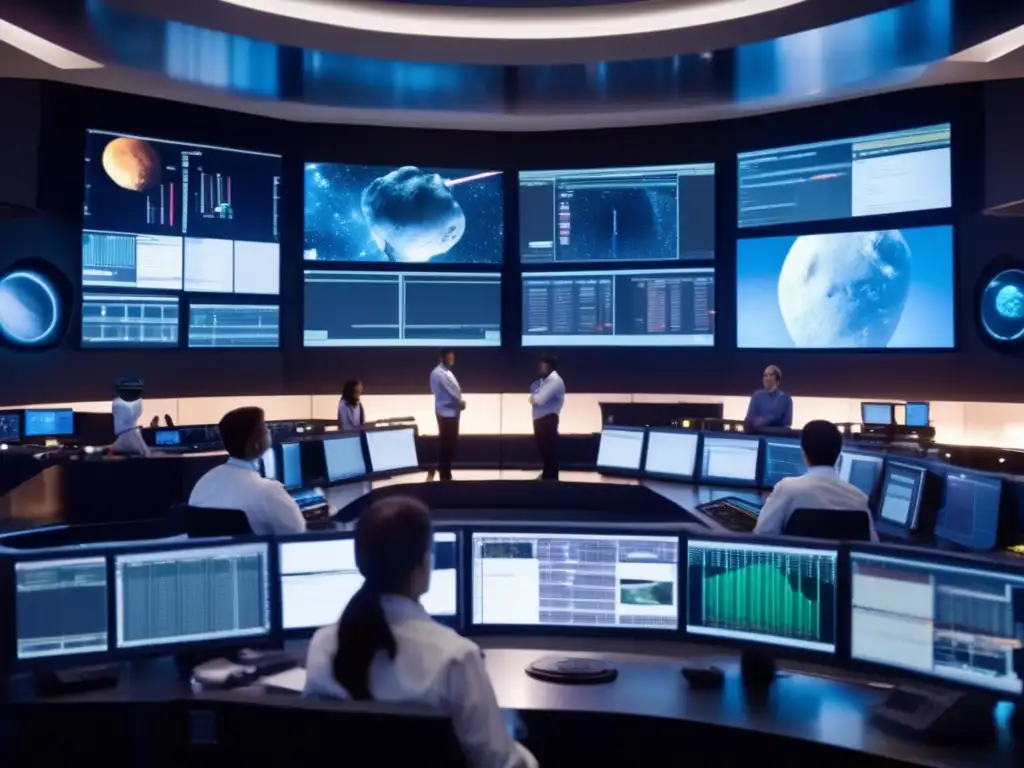How To Incorporate Technology In Asteroid Observation

Introduction
Asteroid observation plays a critical role in understanding these celestial objects and their potential impact on Earth. Advancements in technology have greatly enhanced our ability to observe and study asteroids, allowing us to gather valuable information about their composition, trajectory, and potential threats. In this article, we will explore the various ways technology is incorporated in asteroid observation, from ground-based telescopes to space missions.
Satellite-Based Observations

Remote Sensing
Remote sensing involves the use of satellites equipped with specialized sensors to collect data about asteroids from orbit. These sensors can capture images, measure temperature variations, and detect electromagnetic radiation emitted by asteroids. By analyzing the data gathered, scientists can determine the size, shape, and surface properties of asteroids, providing valuable insights into their composition and structure.
Telescopic Surveys
Telescopic surveys conducted by satellites, such as the Near-Earth Object Surveillance Satellite (NEOSSat), allow for continuous monitoring of asteroids. These telescopes are designed to detect and track near-Earth objects, providing real-time information about their positions and trajectories. This data is essential for identifying potentially hazardous asteroids and calculating their future paths.
Infrared Observations
Infrared observations provide valuable information about the thermal properties of asteroids. Satellites equipped with infrared sensors, like the Wide-field Infrared Survey Explorer (WISE), can detect the heat emitted by asteroids. By studying the infrared signatures, scientists can determine the composition, surface temperature, and potential volatile content of asteroids.
Ground-Based Observatories

Radio Telescopes
Radio telescopes are used to study asteroids by detecting and analyzing the radio waves they emit. These telescopes can determine the rotation rate, shape, and size of asteroids based on changes in the received radio signals. Additionally, radio observations enable scientists to measure the Doppler shift of an asteroid's signal, providing crucial information about its motion and trajectory.
Laser Ranging
Laser ranging involves directing laser beams towards asteroids and measuring the time it takes for the light to bounce back. By precisely measuring this round-trip time, scientists can calculate the distance between Earth and the asteroid with high accuracy. Laser ranging helps refine the orbital parameters of asteroids and improves our ability to predict their future movements.
Optical Observations
Optical observations conducted by ground-based observatories are fundamental in tracking and characterizing asteroids. Advanced telescopes equipped with state-of-the-art cameras and spectrographs can capture detailed images and spectra of asteroids. Through spectroscopy, scientists can analyze the reflected light from an asteroid to determine its mineral composition, surface features, and potential presence of water or organic compounds.
Space Missions

Sample Return Missions
Sample return missions involve sending spacecraft to asteroids and collecting physical samples that are subsequently brought back to Earth for analysis. By investigating actual asteroid material, scientists can gain insights into their formation processes, chemical composition, and the building blocks of our solar system. Missions like NASA's OSIRIS-REx and JAXA's Hayabusa2 have successfully returned samples from asteroids Bennu and Ryugu, respectively.
Proximity Operations
Proximity operations missions involve spacecraft approaching close to an asteroid to study its surface and geological characteristics. These missions often deploy landers or rovers to capture images, collect data, and perform experiments directly on the asteroid's surface. The European Space Agency's Rosetta mission, which explored comet 67P/Churyumov-Gerasimenko, and NASA's upcoming Dragonfly mission to Saturn's moon Titan are notable examples.
Asteroid Deflection Technology
Technology is also being developed to protect Earth from potential asteroid impacts. Concepts like kinetic impactors, gravity tractors, and laser ablation are being explored as possible methods to alter the orbit of an asteroid and deflect it away from Earth. These innovative approaches rely on advanced technologies and computer simulations to accurately model and predict the effects of such deflection maneuvers.
Frequently Asked Questions

-
How can technology help us track near-Earth asteroids?
Technology enables us to track near-Earth asteroids through satellite-based telescopic surveys, radio telescopes, and laser ranging techniques. These tools provide real-time data about their positions, trajectories, and potential threats.
-
What is the purpose of sample return missions?
Sample return missions allow scientists to analyze physical samples from asteroids, providing insights into their composition, formation processes, and the early evolution of our solar system.
-
How do ground-based observatories contribute to asteroid observation?
Ground-based observatories play a crucial role in tracking and characterizing asteroids through radio telescopes, laser ranging, and optical observations using advanced cameras and spectrographs.
-
What is the significance of infrared observations in asteroid studies?
Infrared observations provide valuable information about the thermal properties, composition, and volatile content of asteroids, helping scientists understand their evolution and potential impact risks.
-
Can technology be used to protect Earth from asteroid impacts?
Yes, technology is being developed for asteroid deflection. Concepts like kinetic impactors, gravity tractors, and laser ablation are being explored to alter the orbit of asteroids and minimize the risk of impact.
Conclusion
Technology revolutionizes our ability to observe and study asteroids, enhancing our understanding of these celestial objects and enabling us to mitigate potential risks they pose to our planet. Satellite-based observations, ground-based telescopes, and space missions all contribute to the comprehensive study of asteroids. As technology continues to advance, we can expect even more exciting discoveries and innovative approaches to better explore and utilize these fascinating cosmic neighbors.
We encourage you to share your thoughts in the comments section and actively engage with www.asteroidrealm.com. Consider subscribing, sharing this article on social networks, and participating in discussions. Thank you for your time and attention.
Additional Resources

For further information on asteroid observation and related topics, explore the following resources:
- NASA's Planetary Defense Coordination Office
- ESA's Asteroid Impact Avoidance Techniques Video
- NASA's Asteroid Watch
- International Astronomical Union - Asteroids and Dwarf Planets
 Exploring The Solar System: A Guide To Observing Asteroids
Exploring The Solar System: A Guide To Observing Asteroids The Role Of Telescope Filters In Asteroid Observation
The Role Of Telescope Filters In Asteroid Observation Star Charts And Asteroid Hunting: An Essential Guide
Star Charts And Asteroid Hunting: An Essential GuideIf you want to discover more articles similar to How To Incorporate Technology In Asteroid Observation, you can visit the Telescopes and Asteroid Observation category.
Leave a Reply

Articulos relacionados: